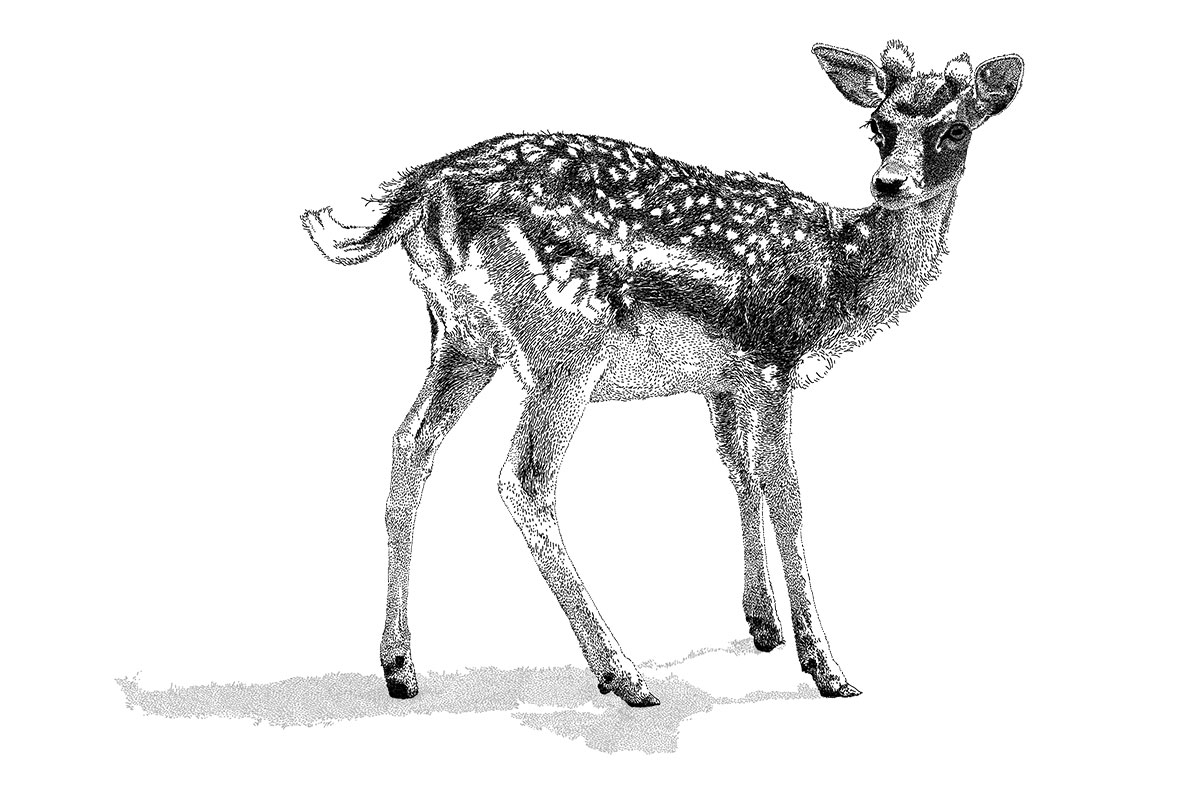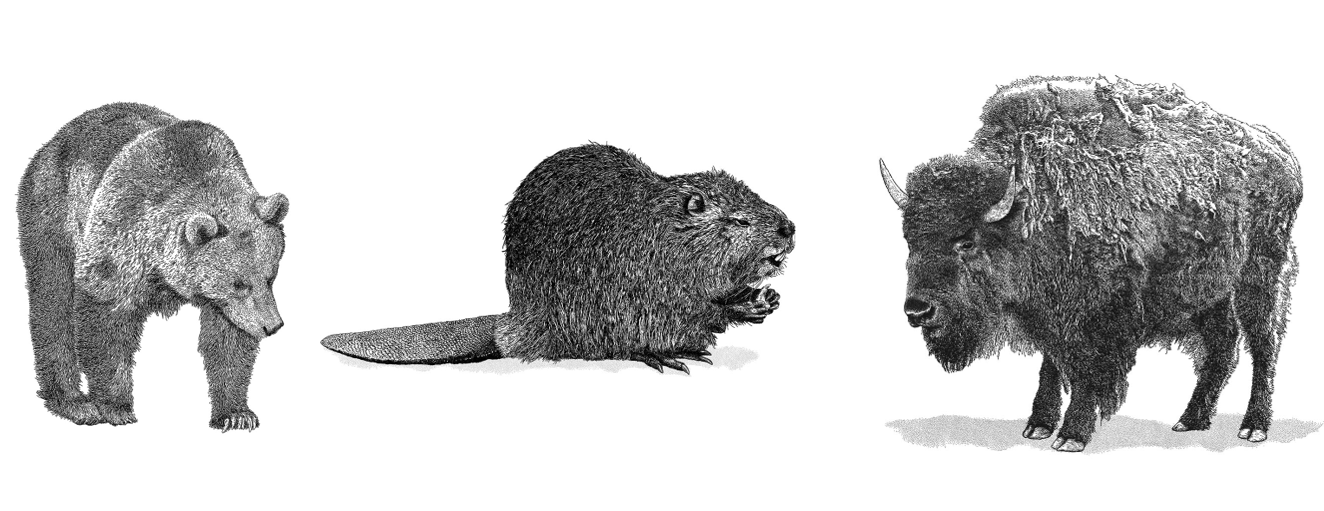The North American Model of Wildlife Conservation is a unique approach that has achieved enormous success in recovering many large vertebrate species from widespread depletion to healthy or abundant populations today. The model is both a historical narrative and a broad set of principles that, collectively applied, has led to what some have called the “form, function, and successes” of wildlife management in the United States and Canada.
From a historical perspective, the North American conservation approach was revolutionary. It freed wildlife from private control so it could be managed by government for the benefit of present and future generations. Sustainable public use became the foundation of management for a plethora of the continent’s wild animals, most notably migratory birds, ungulates, and edible freshwater fishes. The model also provided solid conservation funding through innovative laws at all levels of government, promoted international cooperation that established treaties for managing migratory birds and other species, and set legal controls and enforcement for wildlife trade.
These were remarkable achievements, almost all of them innovations for their time. The model’s core tenants, many of which were incepted more than a century ago, are best reflected in seven defining principles that were first articulated in the early 1990s by the well-known conservation scientist Valerius Geist:
- Wildlife resources are a public trust. The heart of the model is the concept that wildlife is owned by no one and is managed by government for the collective benefit of present and future generations.
- Markets for game are eliminated. Unregulated exploitation of game animals and migratory birds was replaced with federal, provincial, and state laws that regulated harvests and greatly restricted the sale of meat and parts from these animals.
- Allocation of wildlife is by law. Access and use of wildlife is regulated through public laws and rulemaking processes. These laws and regulations establish the framework and directives regarding which species can and cannot be hunted, which are imperiled and deserve special protection, and other considerations related to public use of wildlife.
- Wildlife can only be killed for a legitimate purpose. Killing wildlife for frivolous reasons is deemed unacceptable under the model. Moreover, many states have “wanton waste” laws requiring hunters to salvage as much meat from legally killed game as possible.
- Wildlife is an international resource. Because many wildlife species migrate across political borders, international cooperation is often crucial for protecting species, particularly those subject to human harvest. The Fur Seal Convention of 1911 and the Migratory Bird Treaty of 1916 are early North American-led examples of such agreements. Many nations have followed in providing for international management of wildlife resources in various parts of the world.
- Science is the basis for informed decision-making in wildlife management. Since the days of Theodore Roosevelt, this principle has been critical to North American wildlife conservation. The approach was further advanced decades later by Aldo Leopold and has led to many advances in the management and conservation of diverse species.
- Democracy of hunting is standard. Every citizen has opportunity, under the law, to hunt and fish in the United States and Canada. Such opportunity is not restricted by social class, gender, color, creed, or landownership.
Yet despite its principled basis and many achievements for hunted species and their habitats, the North American Model requires thoughtful inspection. Why? Because the model serves as both a historical narrative for understanding the origins and gradual development of North American conservation and as the basis for current regulatory practices. It is also a possible prescription for future conservation success. All aspects are of great import because the model and our understanding of it will undeniably influence wildlife conservation in the 21st century.
Model Emergence
Early European settlers perceived North America’s wildlife abundance as a “new Eden”—a vast natural bounty, virtually inexhaustible, waiting to be conquered by the willing and able. Excesses in wildlife harvest occurred first in eastern settlement areas. Then, as people moved in increasing numbers westward to pursue land, gold, and opportunity, markets expanded, and an extensive trade in wildlife meat, furs, and other products emerged. Such trade was significantly enhanced by railway expansion as well as government policies and social attitudes designed to impoverish First Nations peoples and take their lands. In this regrettable context, commercial hunters and their employers became wealthy through unregulated killing of wildlife and destruction of human cultures at a scale never before realized in North America, or perhaps anywhere else in the world to that time.
Early European settlers perceived North America’s wildlife abundance as a “new Eden”—a vast natural bounty, virtually inexhaustible, waiting to be conquered by the willing and able.
These efforts devastated many wildlife species across the North American landscape. Many populations, especially of large vertebrates, were unable to survive the scale and efficiency of the settlers’ methods. This soon became apparent, first to the Native Americans and settler hunters who witnessed the disappearance of game animals firsthand, and eventually to the wider public. Extirpation and also extinction—surely imagined as “Old World problems”—quickly became New World realities. Wild turkey populations were reduced from approximately 10 million to about 200,000 following the arrival of European settlers, while North American elk populations declined from about 10 million animals to just 100,000 by 1890. The passenger pigeon, once a prized food source with a population estimated in the many billions, was extinct by 1914, and the iconic American bison, which had numbered 30 million or more, teetered on the verge, its numbers decimated in less than two decades by commercial slaughter. Forests and freshwater fishes were also decimated.
Little wonder, then, that by the mid- to late 19th century, North Americans had begun to realize there were limits to the continent’s wild abundance and that this had been nearly exhausted. This realization helped provoke a conservation awakening in the United States and Canada. The “citizen-conqueror” was replaced by the “citizen-steward,” an advocate for wise and sustainable use of nature. Since its emergence in the latter part of the 19th century, this approach, now known as the North American Model, has helped restore and safeguard many wildlife populations.
The movement was largely led by a rising class of hunters committed to democratic access to wild living resources; rational use of wildlife for personal, not commercial, reasons; and a fair-chase ethic. At the same time, however, a strong advocacy movement for protection of wilderness and natural systems also emerged, giving birth to an appreciation for nature aesthetics that would also have a lasting impact on conservation policies in both countries. Regrettably, the movement would not include the continent’s Native American cultures; these were either destroyed or vastly diminished and impoverished by that time.
Conservation Economics
The International Union for Conservation of Nature, in its “Policy Statement on Sustainable Use of Wild Living Resources,” concludes that “use of living resources, if sustainable, is an important conservation tool because the social and economic benefits derived from such use provide incentives for people to conserve them.” As humans, we are inclined to protect and maintain that which has value to us. This linkage between conservation success and benefits deriving to people from the use of wildlife was forged very early as a foundation of the North American system.
The North American Model, therefore, provides a practical example of how incentivizing environmental stewardship can produce positive conservation gains as well as economic benefits. The model’s sustainable-use system gave rise to rich supporting industries managed by the private sector—such as hunting clubs, guides and outfitters, and clothing, ammunition, and gun manufacturers—while generating substantial wealth and employment across diverse sectors of local economies, often in rural areas. Such economic outcomes further incentivize support for sustainable-use conservation policies and help create constituencies focused on wildlife’s future.
The linkage between conservation success and benefits deriving to people from the use of wildlife was forged very early as a foundation of the North American system.
Currently, economic incentives do not include the commercial sale of wild meat. Indeed, this practice is not just discouraged by the model as it is formulated today but is generally illegal in American and Canadian jurisdictions as a result. In recent years, however, there have been efforts in both nations to modify existing laws to allow some regulated commercial harvest and sale of wildlife. In Texas, for example, a recent proposal sought to legalize the sale of white-tailed and mule deer venison. Such proposals inevitably provoke intense debate. However, we should not dismiss out of hand the idea that limited and highly regulated commercialization of wild meat could create a wider appreciation of wildlife’s value and, therefore, additional incentives for wildlife conservation. The practice could also help in the management of superabundant wildlife populations.
Modern Realities
As we examine the North American Model and its historical track record, we should recall that while some wildlife species fared well under its prescriptions, others did not. In fact, many species went extinct in the 20th century, even as the recovery of “game” or harvested species proceeded in spectacular fashion. Most that were lost were less visible invertebrates or aquatic species, but terrestrial vertebrates such as the Bachman’s Warbler and Eskimo Curlew also disappeared during that time.
The model has strengths and weaknesses. Recognizing both is critical for assessing its relevancy and for ensuring that historical evidence is used effectively, and impartially, to improve future conservation and management efforts. Conservation is never complete. Nor is it ever easy. It is an unyielding problem that encompasses many of the most difficult social enterprises, such as economics, justice, and politics. It requires unyielding effort that inevitably plays out in a dynamic social reality.
Such scrutiny and effort must apply to the North American Model itself. The model cannot become an orthodoxy, nor questioning it a violation. We should ask whether the extinction of the Bachman’s Warbler, Eskimo Curlew, and a host of lesser-known species is, in any way, a consequence of the model’s focus on a restricted guild of species. Yes, thanks to the efforts and financial support of recreational hunters and anglers, harvested species have generally made remarkable recoveries, and their populations are mostly stable or increasing in size today—though there are some recent exceptions, such as caribou. However, in general, it seems reasonable to question whether the disproportionate attention given to hunted species by state and provincial agencies limited efforts that otherwise could have prevented extinctions of numerous others over the past century.
Indeed, there can be no doubt that the dedicated funding and advocacy by consumptive users has dominated the model’s approach. It is not surprising, therefore, that sustainable wildlife management in North America can appear to some as biased and self-serving, where conservation efforts by agencies preferentially target certain species—the ones that “pay their way.” This is a critical perspective for assessing the model’s ongoing relevance. Groups not traditionally engaged in hunting and angling have often been excluded from wildlife policy development, a reality that simply has to be confronted and responded to effectively. At the same time, however, there must be a dependable funding source in support of this wider view and the set of responsibilities toward nature that flow from it. Conservation is never free.
Perhaps most regrettably, though, are biases with respect to the model’s influence as a historical conservation narrative. The model has never emphasized nor acknowledged the already established systems of wildlife use and habitat management that indigenous peoples had in place long before European colonization. Nor has it acknowledged the deep, experiential knowledge of wildlife these peoples had acquired and applied through millennia of dependency and co-existence with the wild living resources of the continent. The North American Model we recognize today is, of course, a European immigrant construction that was both required and made possible by the destruction of the continent’s pre-Columbian wildlife abundance and its extraordinary diversity of human cultures. The ecological views of these peoples and their unique valuation systems toward wild nature were never incorporated within the model, a reality fraught with consequences. Much has been lost in the silence and neglect surrounding this issue.
Today, tension often exists between the continent’s indigenous communities and other users of wildlife. From the latter’s perspective, indigenous rights to hunt and fish can be viewed as disproportionate or preferential, though indigenous peoples perceive such rights as only natural. This tension is real and deeply felt. It poses challenges legally and from a conservation policy point of view. It has deep implications that cannot be remedied without reference to the historical realities that gave rise to it. In the meantime, it is clear that democratic access to hunting opportunities, one of the key principles of the model, is now confronted by a dichotomy of communities, one indigenous and the other settler-derived, whose legal access to wildlife for harvest and consumption can and do differ, sometimes to dramatic extents.
The Future
The North American Model of Wildlife Conservation is currently the subject of considerable debate among diverse stakeholders. Since the inception of its conservation movement more than a century ago, North America has witnessed vast social, cultural, and economic change. This evolving context presents ongoing challenges to conservation policies and approaches. Increased urbanization, decreased personal engagement with animal death, and new insights to animal intelligence and behavior are all leading to substantial changes in society’s general attitudes toward animals and our acceptance of using them for human purposes. It is little wonder that these attitudes can alter broad social interpretations of the North American Model and lead to reduced participation in activities long supportive of it, such as recreational hunting and angling.
These shifting values are unlikely to be reversed, predicting increased influence by these movements over time. Their combined effect will be to potentially incite substantive change in the model. Certainly, such social perspectives will predictably lead to increased debate over North America’s conservation approach and will determine how relevant the model itself will remain.
The model’s ongoing relevancy is also affected by new realities regarding public and private land, especially in the United States, where more than 60 percent of land is privately owned and about three-quarters of endangered species rely on private land for habitat. Despite North America’s success in establishing a state-based system of protected areas and the positive extension of land protection by non-governmental organizations, the best available science shows the set-aside of land remains insufficient to address landscape-level requirements for ecological connectivity. Any geographically extensive conservation effort in North America, therefore, must include private land if it is to have any chance to be effective, and new engagement by private landowners as “citizen conservationists” is critical.
Despite some obvious limitations, the model exemplifies the great hope that concern for wildlife’s welfare can indeed unite disparate groups in fruitful cooperation.
There can be little doubt that the North American Model needs to address these challenges and the criticisms arising from them. Conservation approaches must continuously innovate. They must also create institutions capable of assuming long-term leadership responsibility for sectoral issues such as science and scholarship, management, policy, law, and law enforcement, but also for wildlife and nature economics. Above all else, conservation institutions must remain sensitive to the social as well as physical environments in which they operate. In the absence of this, existing approaches that are no longer effective may be inappropriately maintained, ill-conceived alternative approaches may be embraced, and the risk of wildlife extinction may dramatically increase.
So, what is the future of the North American Model? The model’s great conservation success was built on an appeal to the citizenry, which led to the formation of prideful constituencies who defined themselves as conservation advocates. For wildlife to thrive, citizens must continue to be engaged. But, of course, the citizenry is changing, and therein lies the model’s greatest challenge: Can it adapt fast enough while securing the basic principles and mechanisms required to retain both public support and wildlife abundance?
Even wider questions remain: Are the existing energies for conservation, regardless of viewpoint, sufficient to its needs? And for whom is wildlife managed and for what purpose? Indeed, will wildlife be managed at all in the future? These are not new questions, of course, nor are the corollaries: Who will care sufficiently to pay for the conservation paradigm of tomorrow? Can we be united in our human affection for nature and wildlife, even if we differ in our views of how best to protect it? Or is conservation to be an ideology, exercised at the expense of that for which it was conceived?
The Great Hope
The North American Model of Wildlife Conservation represents a singular achievement. It has demonstrated that it is possible to reverse declines in natural diversity and abundance across vast geographic areas while maintaining multiple uses and public access to wild, renewable resources. Globally, the model’s importance lies in its demonstration that use of wildlife, where sustainable, can indeed contribute to human needs while maintaining thriving wildlife populations. Conservation need not be an either/or proposition.
Of equal importance, the model has shown that these broad principles of conservation can be applied across great cultural and political divides. Through its example, we discover that human diversity and social complexity are not insurmountable barriers to conservation success. This, too, is a vital lesson for the world. Despite some obvious limitations, the model exemplifies the great hope that concern for wildlife’s welfare can indeed unite disparate groups in fruitful cooperation. Such a reality closely approaches the holy grail for the conservation prospector today and is of certain value to the international conservation community as it pursues solutions to global conservation challenges.







